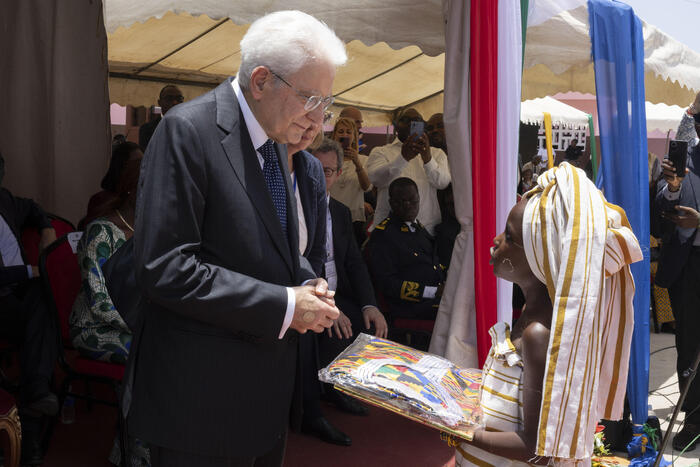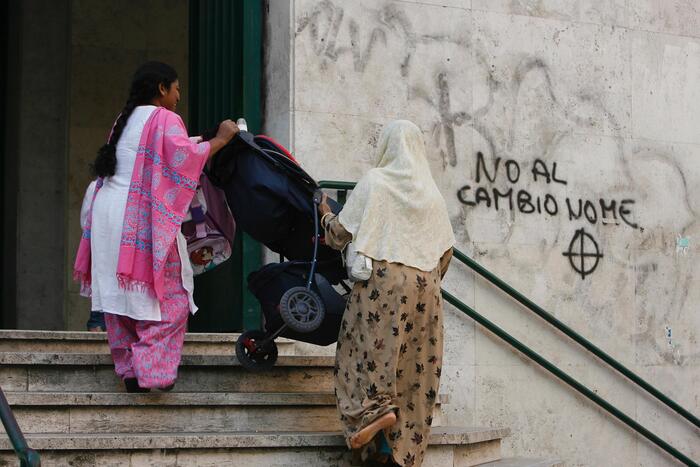Icon: enlarge
Children on the way to school (symbolic image)
Photo: Ralf Hirschberger / dpa
Sonja Kuchel remembers well what the school principal said to her daughter at the parents 'evening for the first graders: "If I see a child who rides a bike on the school grounds without parents' supervision before the fourth grade, I confiscate the bike and switch the youth welfare office ", the Kiel woman repeats his words.
You can hear the mother how angry the sentence made her.
"It is okay to make a recommendation. A ban is not. My child has been riding the bike to daycare since it was three because we can get to school so much faster."
In fact, in the vast majority of school regulations in German primary schools, the way to class is regulated.
Sometimes in harsh, sometimes rather appealing words, it says that the cycling test anchored in the curriculum must first be passed in fourth grade before elementary school students are allowed to cycle alone.
In class, they learn how to use cycle paths, which traffic signs there are and how big the blind spot is on trucks and buses.
Then they train skills in slalom driving, crossing a seesaw board and braking exercises.
A question of the level of development?
Many parents do not like the fact that school principals and not parents decide how children come to school, they feel patronized.
Anke Wessels, also mother of a six-year-old son who just started school, does not agree: "Parents should be able to assess their child as well as they should be able to decide for themselves how to get to school."
After all, ways to school are very different - sometimes they lead along main streets, sometimes through a quiet residential area - and it plays a major role whether you live in the country or in the city.
The police, who in most federal states are involved in traffic education in schools, have a different argument: with the child's level of development.
"In younger children, under ten years of age, their eyesight and hearing are often not fully developed, and distances and speeds cannot be correctly assessed," said a spokeswoman for the Berlin police.
Officials conclude that children cannot be predictive enough.
Parent taxis, bad roads - these are problems
According to experts, this is usually the case.
However, instead of pronouncing bans, one could prefer
make road traffic safer and therefore more manageable, says Wessels.
She lives in the north of Hamburg and doesn't let her son ride his bike to school alone.
The parents in their neighborhood take turns accompanying the schoolchildren on their way.
In the long term, however, they should cope with it together on the scooter without being accompanied.
The parents' greatest fear are the numerous parent taxis in front of the school premises, an incalculable danger.
The statistics show how big the problem is: 43 percent of all children under the age of ten are driven to school.
Most of the ways to school in Germany are short: 68 percent are less than two kilometers long.
"Parent taxis are a great danger," says Kuchel.
She accompanies her daughter on the way to school.
Both then cycle. There is another elementary school on the way, which they have to pass by.
There they experience the chaos on the curb every day: "The parents behind the wheel seem stressed. They brake abruptly to let their children out or rumble up the sidewalk in the car."
Safe crossings, Tempo 30 - there are solutions
What can happen is shown by an accident in Mönchengladbach in which an eight-year-old girl was run over by an SUV in front of her school and died.
The 44-year-old driver was sentenced to a suspended sentence for negligent homicide.
Bad bike lanes are another problem.
71 percent of Germans are of the opinion that wider cycle paths separated from car traffic could help get more school children on their bikes - according to a survey by the Institute for Applied Social Science (Infas).
Safe crossings on main roads are at least as important.
"My daughter has to cross the Schützenwall," said Kuchel.
Trucks rushing across the street from the motorway into the city.
"It feels bad to see a child approach the street with the huge satchel on his back."
Kidical Mass: Demonstration for better bike paths
In order to draw attention to the situation of young cyclists, a large action alliance called for the first nationwide family bike demo Kidical Mass on September 19 and 20 - the term is derived from the Critical Mass, a regular outing where thousands of participants take to the streets in convoy for better cycling conditions.
With the family variant, children, young people and families cycled through over 80 cities and called for a new transport policy so that children can cycle safely and independently in the cities.
"Traffic needs borders, not children," was one of the motto.
There was no direct political response.
In view of the school regulations, such protests would not be necessary: "We can't really ban cycling," says the director of a primary school on the outskirts of Hamburg.
"But I am sticking to the recommendation of the traffic policeman who conducts our cycling test."
She does not want to be mentioned by name.
"There is no legal basis that prohibits children from riding their bikes to school from the first grade," says the traffic prevention department of the Hamburg police.
At the same time, the police point out that legal guardians have a duty to supervise minors.
The legal situation is therefore very clear: the way to school is a parent's affair.
However, when recommendations such as bans are made, this creates social pressure.
Many parents adhere to these guidelines.
This creates a paradoxical cycle: Many people drive their children to school by car, traffic increases and it soon seems too dangerous to let the child walk to school, for example.
How do you get out of the situation again?
By improving the situation of young cyclists so that it goes without saying that they move around in traffic, says Wessels.
A strengthening of the cycling culture and better bike paths are part of it.
In addition, a regulation must be found as to how far parents can drive to schools - and better bike paths.
"We are lucky enough to live right on Veloroute 4," says the young mother.
Over a distance of 18.5 kilometers, there are many sections, 30 km / h zones and bicycle roads that create a safe environment.
Icon: The mirror















